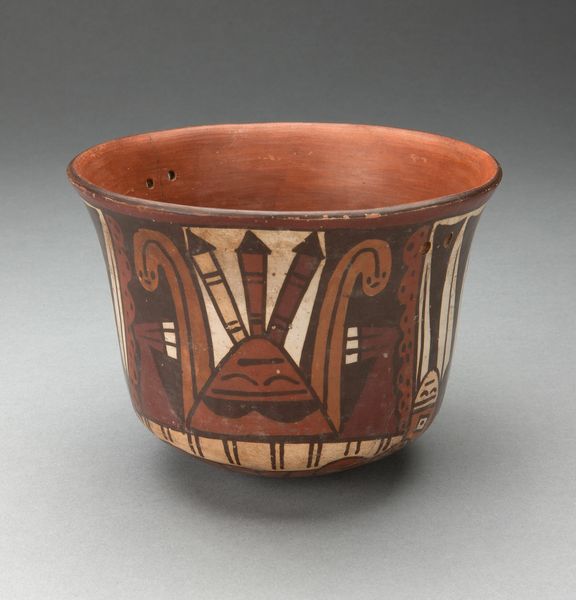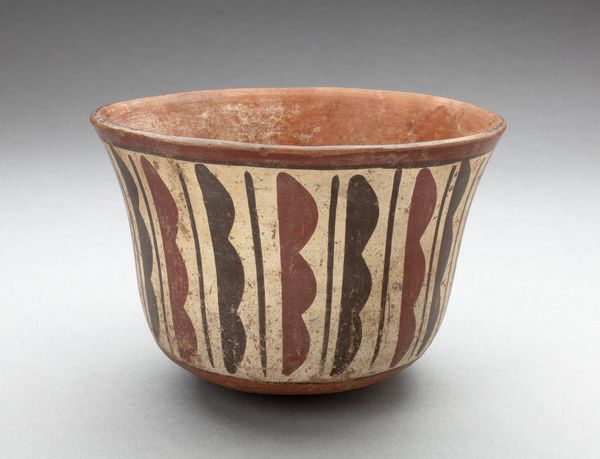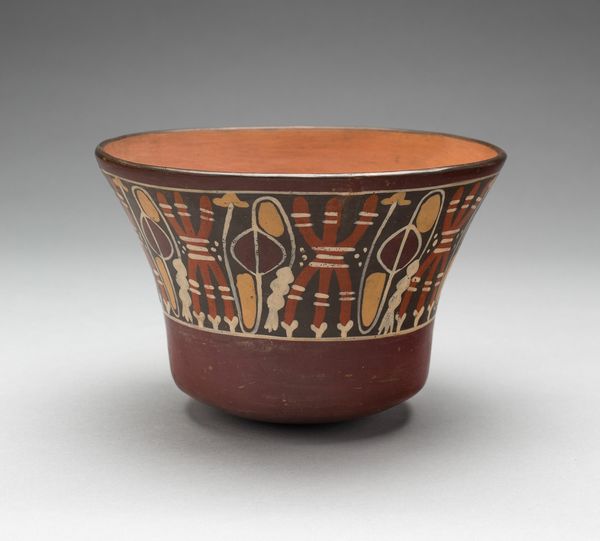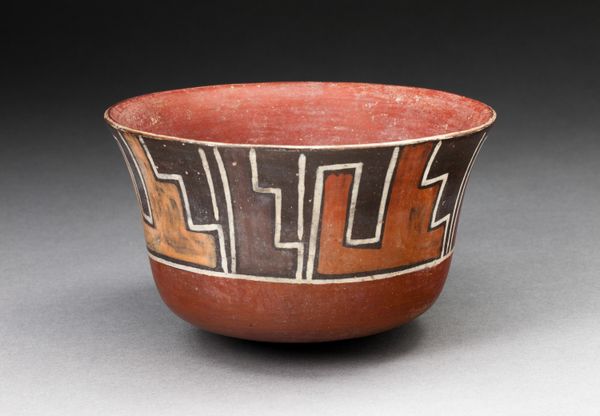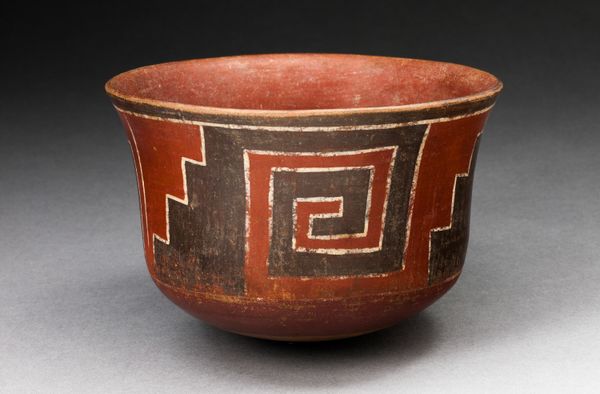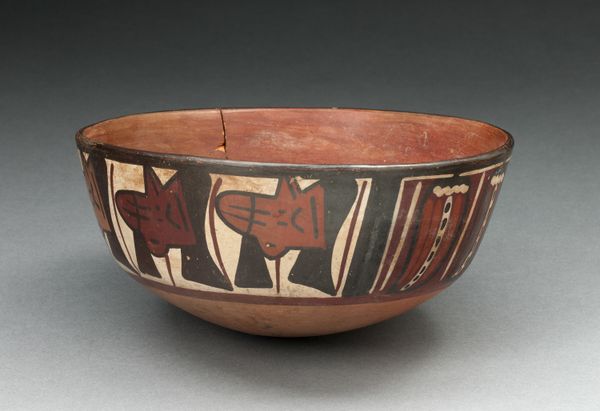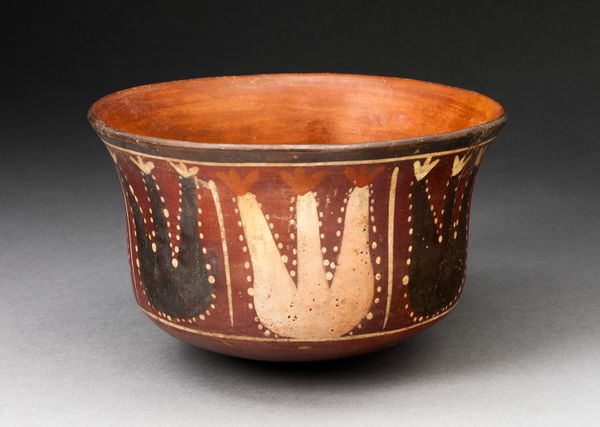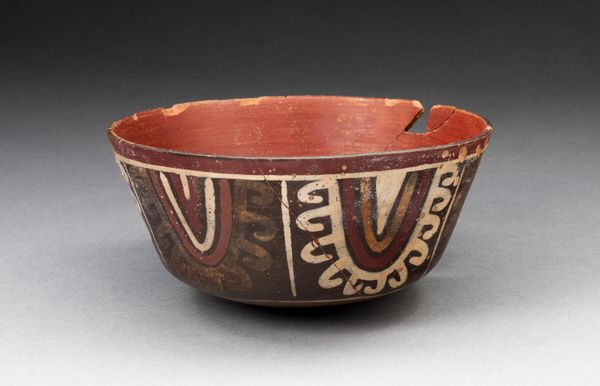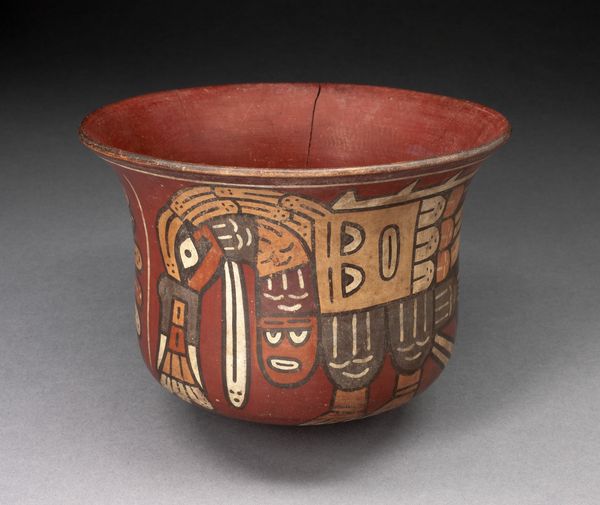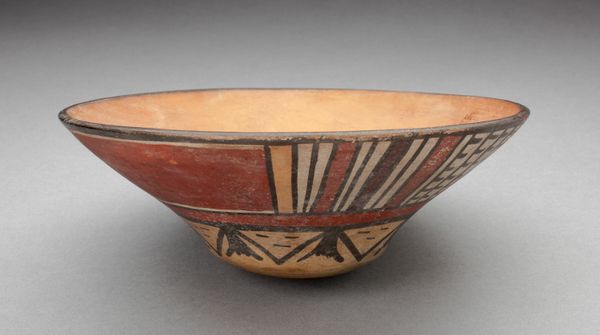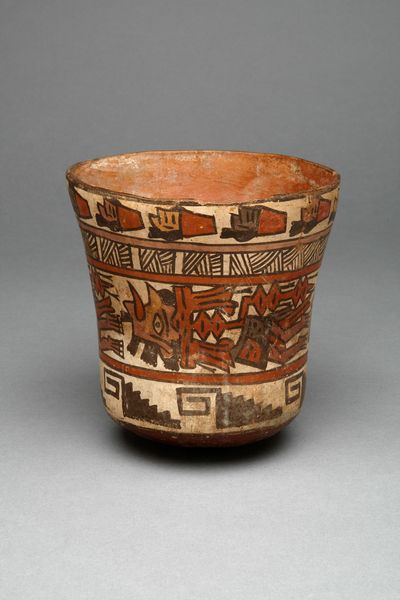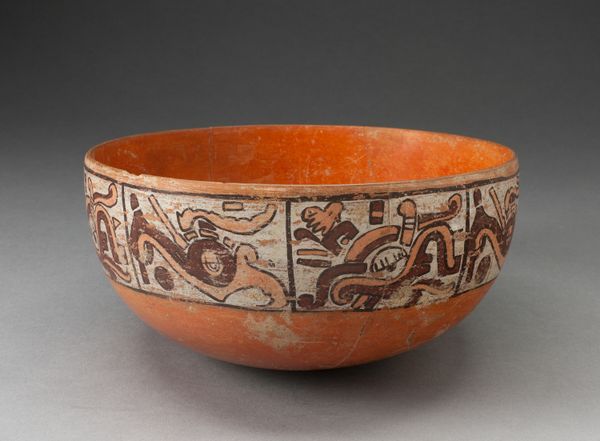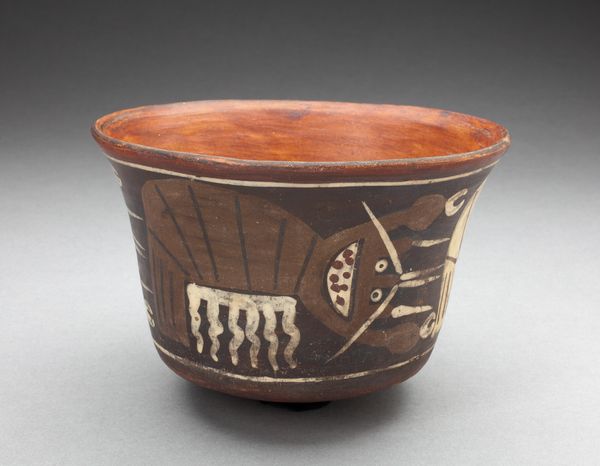
ceramic, earthenware
#
ceramic
#
figuration
#
earthenware
#
geometric
#
ceramic
#
indigenous-americas
Dimensions: 10.2 × 14.3 cm (4 × 5 5/8 in.)
Copyright: Public Domain
Editor: This is a ceramic cup made by the Nazca people sometime between 180 and 500 AD. It’s currently held at the Art Institute of Chicago and features these intriguing long-necked birds. The colors are so striking, yet earthy. What cultural narratives do you think this piece might reveal? Curator: The imagery isn't just decorative. These "birds" likely hold symbolic meaning deeply entwined with Nazca beliefs. We must consider how power dynamics within the society could have influenced the representation of such imagery. Perhaps the long necks signify social status or connection to the spiritual world, reinforcing hierarchies and specific roles. What do you think about its possible connections to gender roles or shamanic practices within the culture? Editor: That’s fascinating! I hadn’t considered the power dynamics inherent in the imagery. The shape of the cup itself—was it a common form, and what might that tell us? Curator: Exactly. Its form connects it to daily rituals and possibly more ceremonial contexts. Consider how access to or the creation of these kinds of items could empower certain groups. These visual motifs may also reveal how the Nazca perceived their environment and incorporated natural elements into their cosmology. Are the birds specifically local to the region? This interplay is central to understanding its role as a cultural artifact. Editor: That makes sense. Knowing the environment shapes the worldview expressed in their art. I’ll definitely be paying more attention to those elements now! Curator: Indeed. Artworks like this are not isolated objects. By examining them through the lenses of historical context, and cultural symbolism, we reveal a powerful lens into past societies.
Comments
No comments
Be the first to comment and join the conversation on the ultimate creative platform.
